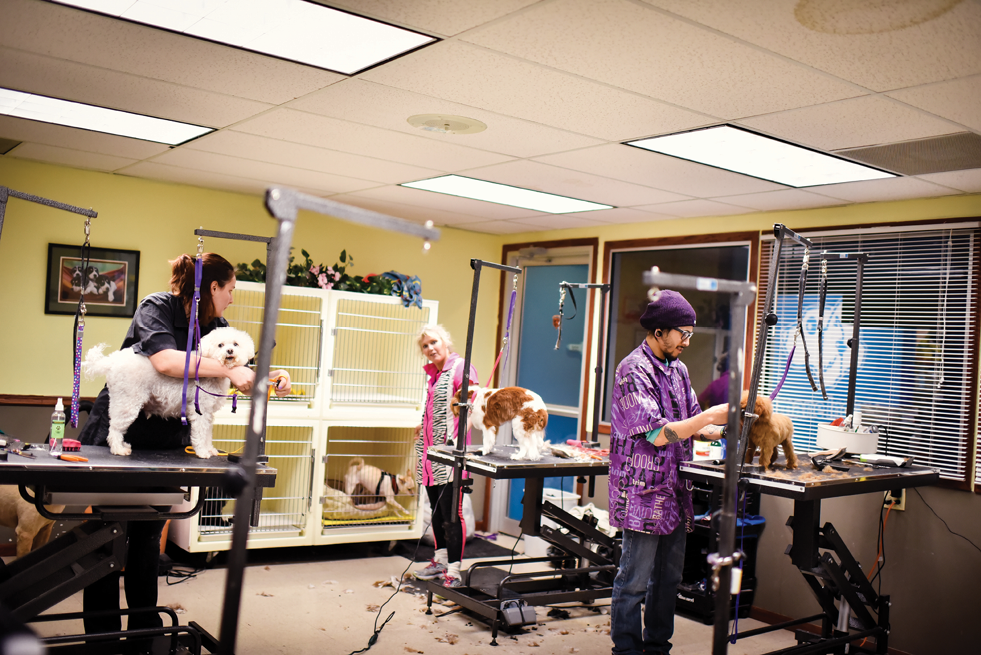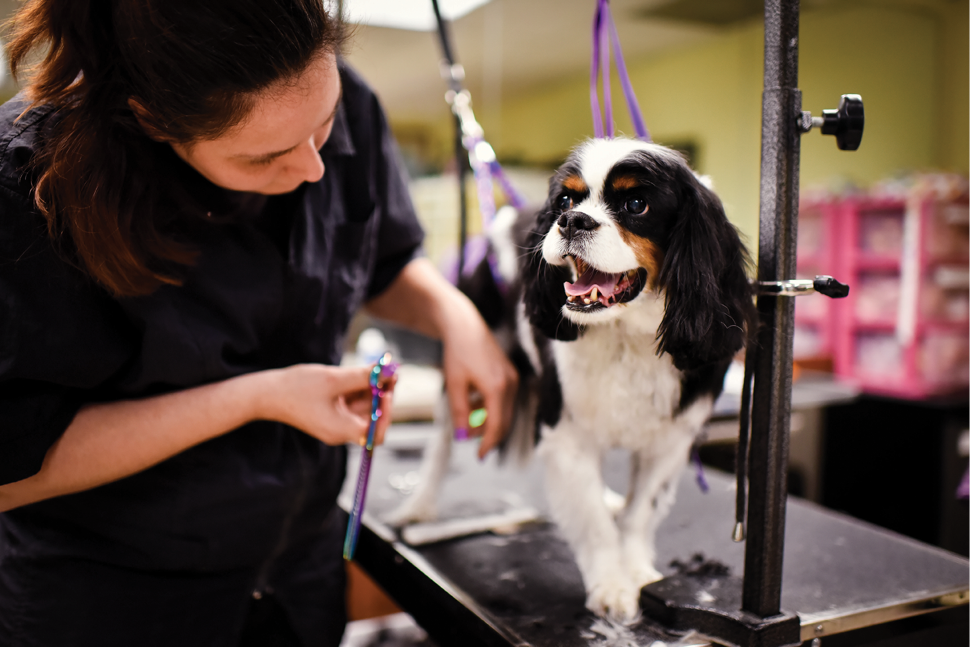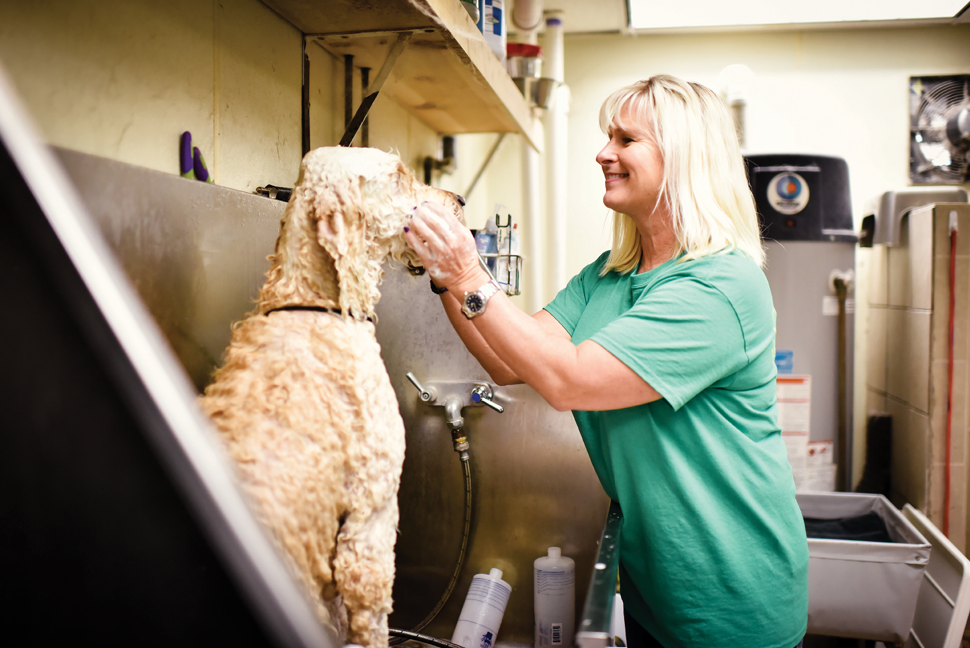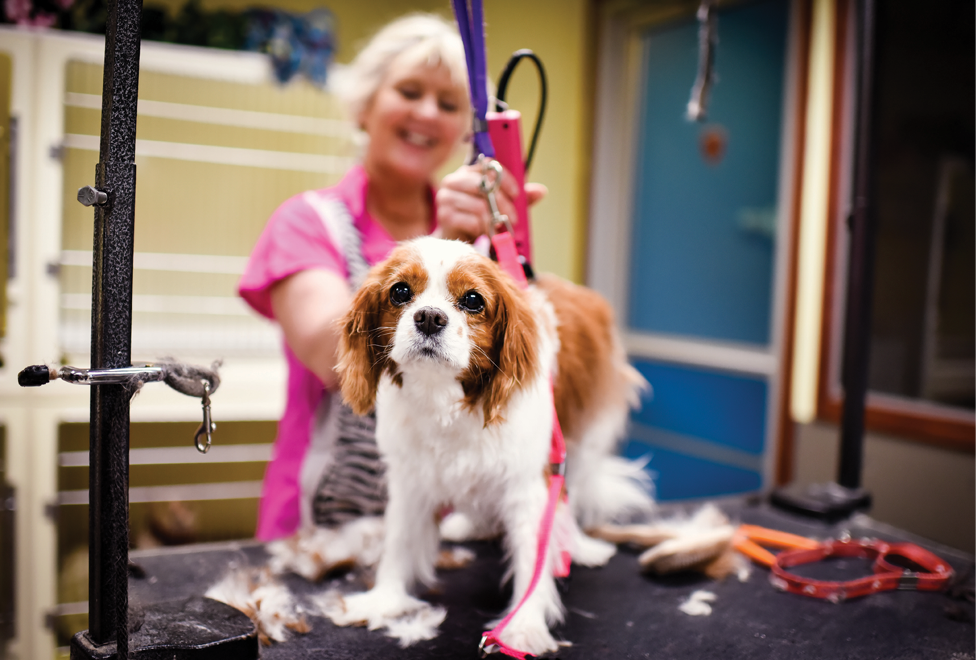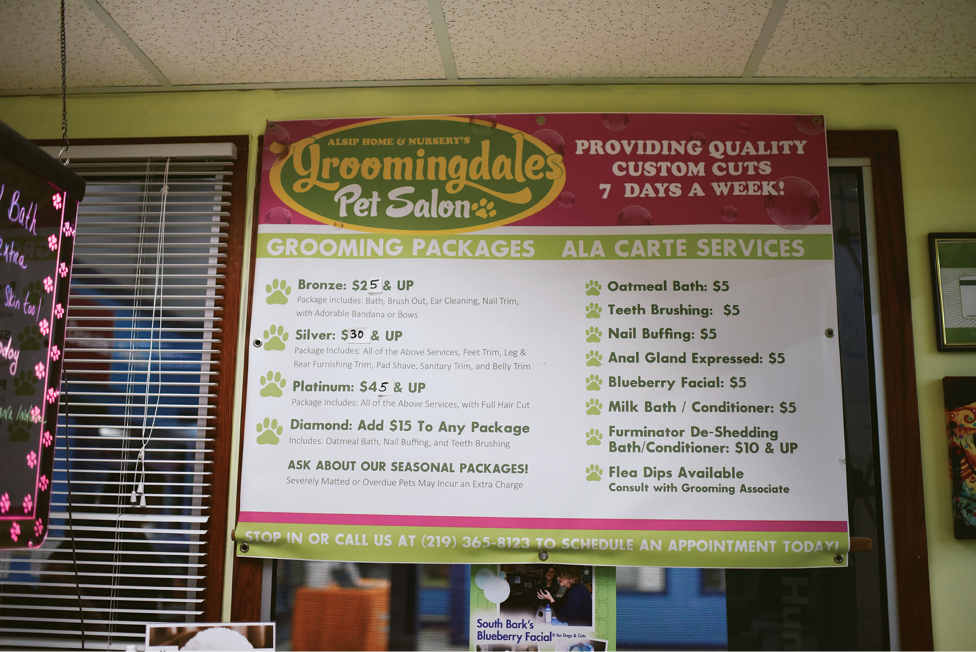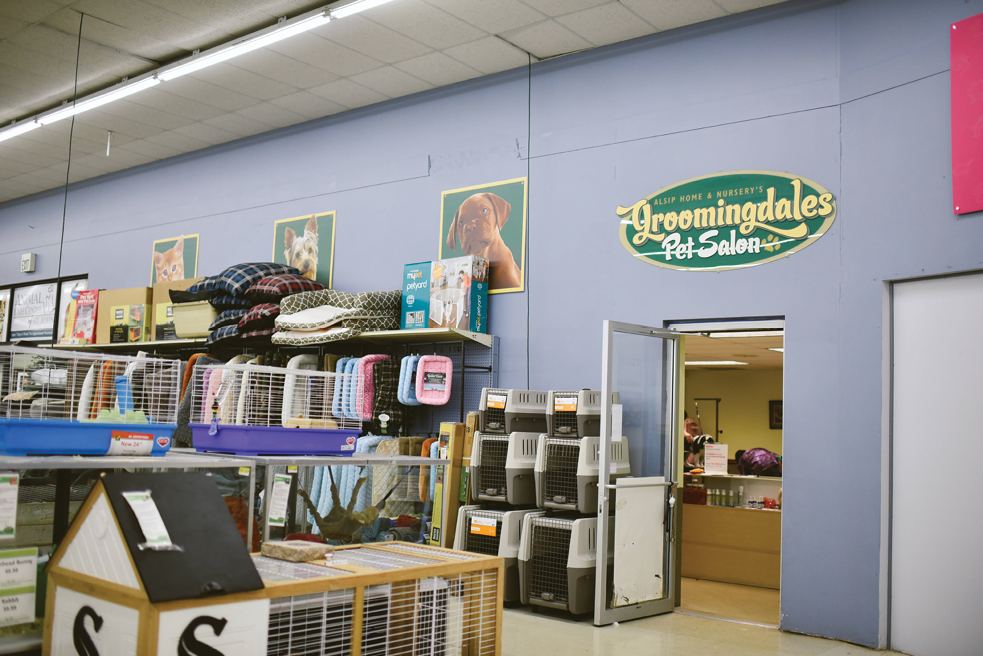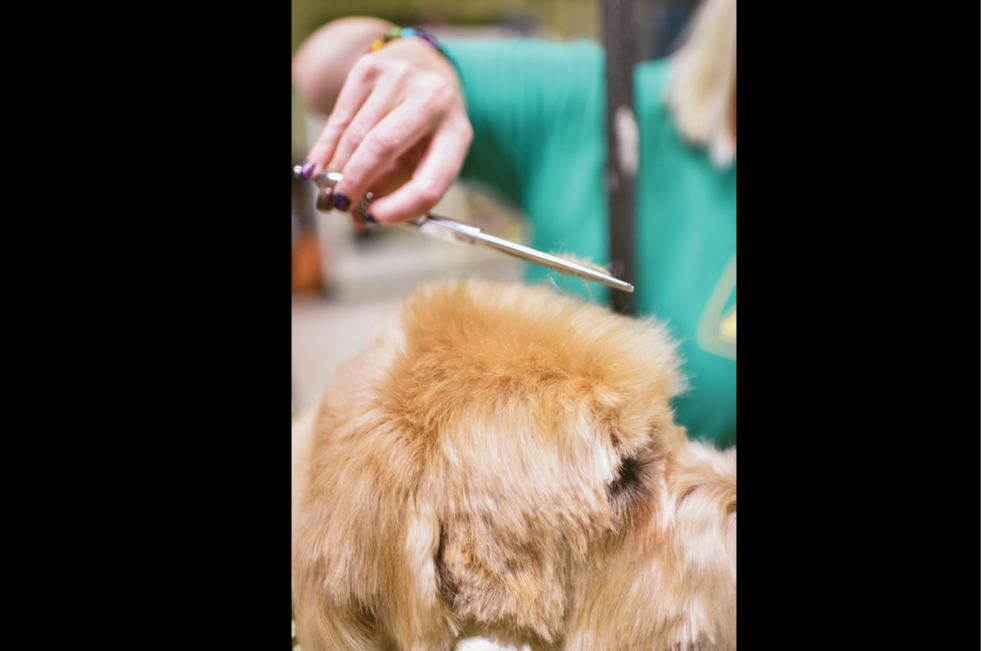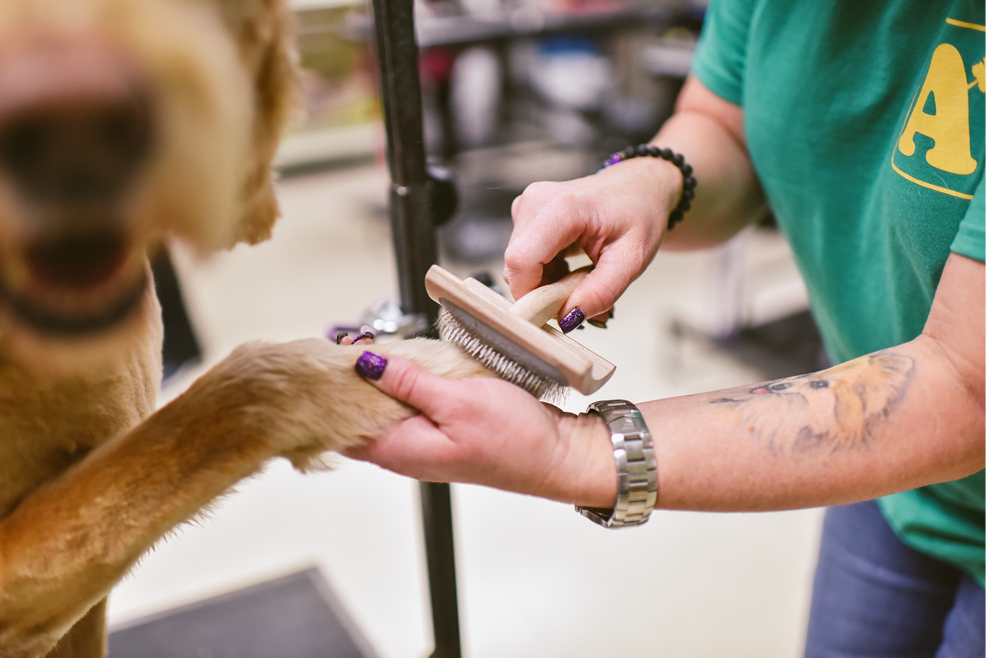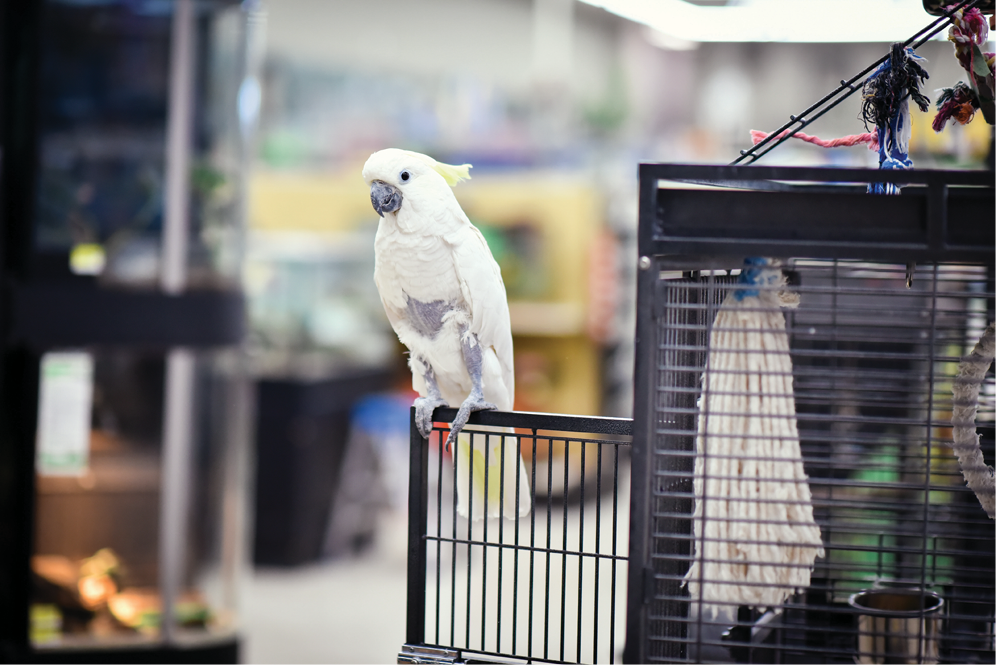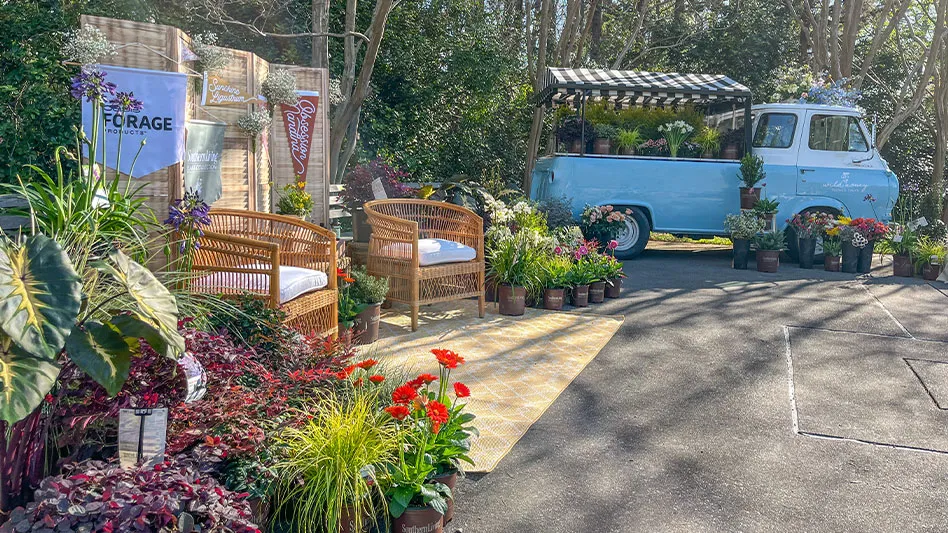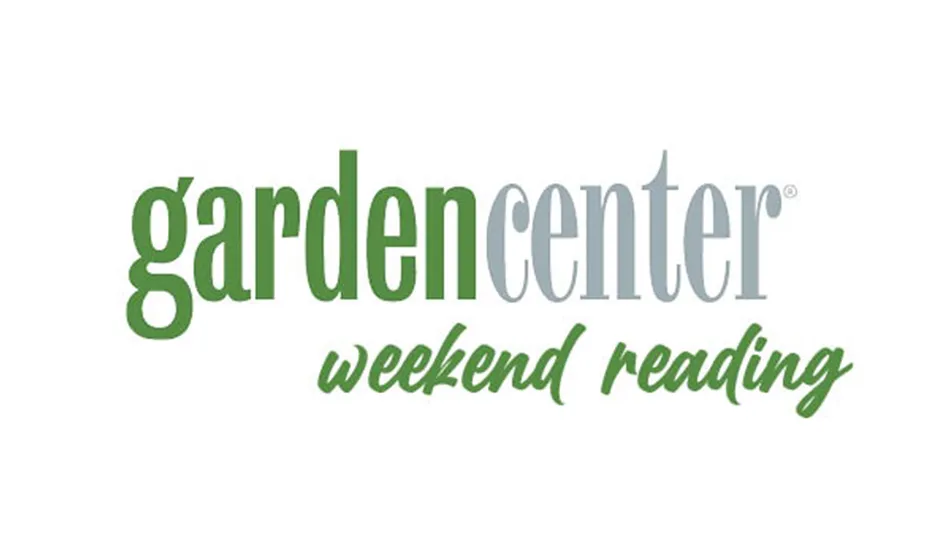

People love to spoil their furry family members. Between 2008 and 2010, during the height of the Great Recession, pet spending continued to increase, as consumers treated their dogs, cats, birds, fish, reptiles and other pets to $48.35 billion in food, treats, vet care and other products. A decade later, that number has skyrocketed, as it is estimated that people spent close to $70 billion on their pets in 2017, according to the most recent statistics from the American Pet Products Association. About 68 percent of U.S. households own a pet, according to the association’s most recent survey, up from 56 percent in 1988, when the survey was introduced.
Pet departments can be a natural fit in independent garden centers, which have been pet friendly long before restaurants welcomed dogs on patios. Thirteen percent of garden centers that took Garden Center’s 2017 State of the Industry Survey indicated that they have pet departments — and many have reported steady, reliable sales from this segment.
A decade ago, Alsip Home & Nursery went beyond the pet products they already sold and started offering a service — pet grooming. We spoke with CEO Richard Christakes and Sandy Richwalski, pet department manager and buyer, about what goes into this ancillary offering, called “Groomingdales Pet Salon.” They share the most interesting requests, cautionary tales and what garden center owners who are interested in this service should know before diving in.
Pet grooming

Garden Center: Do you hire groomers and manage the pet salon directly, or do groomers rent the space?
Rich Christakes: We own the grooming business, and it’s set up like a hair salon. It’s a 50/50 split with the groomers, so half of that goes right to the bottom line. It has been continuing to grow.
GC: How many groomers are on staff, and what are their hours like?
RC: The St. John store has six or seven groomers, but we only have four grooming tables, and we literally turn away business. We were planning on expanding it a few years ago but ended up doing another expansion — we added 9,000 square feet of retail greenhouse [space] in the St. John store and added a contractor building on our re-wholesale [store] — but there is a plan to expand grooming in 2019.

We’ve found a good [team] of groomers, too, especially here in Indiana, and they can make as much money as they want to put their effort into it. Sometimes they’ll stay for a 12-hour day and take walk-ins if they are free.
GC: How was business in 2017?
RC: Last year, St. John did $409,000 in grooming and Frankfort did $133,000. Frankfort hasn’t caught fire with dog grooming like [St. John], and it might be because of competition in the area. But we are still up from last year. It’s great for the bottom line, it takes up very little space, and people love to pamper their pets.
GC: What are the most popular days for dog grooming?
RC: The weekends are definitely the busiest, and right before holidays, we get really busy. That can be any holiday, [including] Easter, Fourth of July … any holiday where people are getting together, they want their dogs looking good.
GC: How do people schedule grooming appointments?
Sandy Richwalski: They can sign up online, call either store or walk in. They can request an appointment online, but we call them back [because certain dogs] can take two to three hours to work on, by the time you get all of the knots out of their hair, wash them, dry them and groom them. When you’re booking, it’s not necessarily black and white.
GC: What services do you offer?
SR: [Dematting], bathing, hair coloring, trimming nails, painting nails. During football season with a big game, some people want their favorite number put on their dog. It’s a chalk that goes out after a few days. We just do nail trims at our pet desk, and at [the St. John] location alone, we average around $450 a month just in nail trims. It’s nice having the vet here because there are cats that have to be sedated or we need to twilight them, as they can’t tolerate [nail trimming.] Editor’s Note: Alsip also has veterinarian clinics on site that rent space but operate separately from the store. They also rent space to two local animal rescue nonprofits.
GC: What’s the most unusual grooming request you’ve received?
SR: We’ve had a lot of people with cats that want lion cuts, so they just have a mane around the neck. We’ve had mohawks requested on dogs. We offer unique things like blueberry facials; it helps with tear staining and opens the pores around the face, and it’s gentle.
GC: How do you market and advertise pet grooming?
RC: We include it in our print [advertising] and we do some direct mail. I have a lot of video planned in our marketing budget this year, and I have an outside company that I’m working with, and grooming is included in that.
People bring their dogs in to take photos with Santa and the Easter Bunny. We used to charge for it, but I stopped because it was such a pain to deal with going through the photos, so we just upload them all to social media with our watermark, and they can share them.
GC: What challenges have you faced?
RC: Early on in the business, both locations were burned by groomers leaving and starting their own business and bringing their clients with them. Now we have non-compete clauses. It was a challenge building the clientele and finding the right groomers. It’s just like how you go to the same place to get your haircut — groomers now have a loyal clientele following.
GC: Would you recommend other IGCs operate grooming services? What do they need to know?
RC: I would recommend it, if they’ve already been established in the pet industry and pet supply especially. I would make sure they have noncompete clauses. There’s an investment cost, obviously of the space, but you’ll need to invest in bathers and big wash tubs. We actually have dog showers for the big dogs. There is all that investment, and you need to be prepared to change your hot water heater out at least once, sometimes twice, a year. It’s all filtered very well, and it still doesn’t matter. We’ve gone through a lot of water heaters and washers and dryers because we are constantly doing laundry. There’s a lot of towels, as well. We do supply shampoos, that is why the groomers would not necessarily go in the business on their own. We pay for utilities, space, shampoos. We sell them at retail, as well.
GC: What other pet-related products do you sell, other than food and grooming supplies? What services do you offer, other than the vet clinic and grooming business?
RC: We sell small animals, such as hamsters, gerbils, lizards, fish. [We adopt] dogs and cats through our [nonprofit animal] rescues. We offer kids’ workshops. We’ve got a couple of mascots: a 14-year-old cockatoo named Molly and a tortoise, Rex. Everybody loves Rex. He’s growing like crazy.
GC: Do you track how grooming has affected overall sales?
SR: We’ll talk with people in between about shampoos, conditioner; there are a lot of grooming products and brushes and combs we can sell. Clients ask our groomers about what’s new, what new treats do [they have]. People walk around the store while they are waiting. Customers will get a buzzer [or leave their cell phone numbers] so they can walk around the store, browse, and not have to sit in our waiting area.
GC: Why do you think it’s important to offer this and other services?
SR: It does bring business, offering these services, and that’s what people want, especially when it comes to animals. Those are their babies, those are their children, and they want them pampered and taken care of. This is the day of services. Everyone wants to be pampered and taken care of, so why not their babies?
It’s all about making sure your customers are happy. Our groomers go above and beyond. I’ve seen them carry in dogs for customers. Some of our seniors who we’ve had for a while can’t go out [anymore], and we actually go to their houses. You watch the dog from [when they’re] a puppy, and you watch them grow.
Photo gallery: Groomingdale's at Alsip Home & Nursery
We Plan, You Plant: tiered landscaping services

Garden Center: Why did you start offering “We Plan, You Plant”?
Ed Kopec, president, Edward’s Garden Center: We noticed that when people would come into the garden center, they were just puzzled by the amount of plants and trees and didn’t know where to start — that spurred this on. When I started it, I didn’t call it, “We Plan, You Plant.” I was just in the garden center and noticed homeowners not knowing what to do. I would just really feel them out for what they were interested in, and a lot of times they had pictures on their cell phones of their property. I would go back in my office, scratch a sketch up, go back out into the center, walk them through, show them plants, and I just sold an awful lot that way. The fact that we know what we are doing, the place is meticulous all the time, it was an easy sell.
GC: Did you also have people who wanted landscape help but who couldn’t afford full-scale services?
EK: An awful lot of them just want to save money, especially homeowners who have built a new home and have gone over their budget. Of course, the landscape is always the last to go in. So, they’ve found this service as a way to get their house landscaped with a little bit of their own muscle, save a few dollars and get it done.
GC: How many people do you have on your landscape crew, and how many facilitate the We Plan, You Plant service specifically?
EK: When I got the idea to offer the service, I hired a fellow I’ve known for 30 years, [Bernie Trudnak,] who had his own landscaping business but retired and still wanted to stay active. At our peak, I had 18 men on the road and two estimators. I’ve scaled that back; I have 5 men on the road that really only do maintenance services. If Bernie gets overwhelmed, sometimes I will jump in. I just hired a woman who worked for me several years ago, and she’s really talented in terms of design work, and she works three days a week. Bernie works three to four days a week.
GC: How does the service work?
EK: Bernie hand-draws designs, and he’s really quick at it. At the initial meeting with the homeowners, they bring in pictures — and we don’t like them on the cell phone. We like pictures Bernie can keep. They bring in pictures and measurements, and Bernie will get a feel at the initial meeting of what their tastes are. He goes over initial design, walks them through the garden center and shows them plants. If they spend $500 or more on retail plant material, we deliver the plants and set them up exactly the way they should be to be planted. Bernie or one of the men who works for me and has that experience will go out. It depends on the job. If it’s a $500 job, it’s simple, one person might go out, but we’ve done jobs that are $8,000 to $12,000 through We Plan, You Plant.
GC: What challenges have you experienced with the program?
EK: Sometimes [an older] couple will come in, and they either physically can’t do the work, or they just don’t want to. I’ve got a wholesale business also where I sell seeds, fertilizer, mulch and aggregates to contractors. There are several contractors who we feel very good about, and we’ve put them in touch with the homeowner and they make their own separate deal in terms of planting. We have an agreement with these gentleman, if they are going out to add mulch or soil, and, if we fed them the job, all of the materials [they use] are purchased from our place.
GC: How do you market and advertise the service?
EK: There is a weekly television show called “Home & Backyard,” and what they’ll do is they’ll bring in a gentleman who is knowledgeable in the landscape industry into the garden center and film a 4- to 5-minute segment. We did that twice for We Plan You Plant. If you go to our website, there is a video, and that video is Bernie walking a customer through, and it goes through the whole process. [We also advertise on] Facebook, and our staff members are trained to mention the service.

GC: Would you ever consider offering full-scale landscape services again, given this recent resurgence in interest?
EK: I have three children, and my youngest, Jim, worked in the garden center from about the time he was 12 years old. When he was in high school, he worked with the landscape crews. He recently graduated from college with a degree in math, got an internship with an insurance company, and after three days, he couldn’t stand being indoors. He’s decided to join the family business. His initial start is going to be working with the landscaping crew. So, depending on where he wants to go with it, we may build it up again.
GC: Would you recommend other IGCs do this? What do they need to know before getting started?
EK: I think it’s great for us. I think that if a garden center was to offer it, they should have a dedicated staff member who takes care of it, including email and phone requests, walkthroughs, dropping plants and placing them. We’ve had times when the homeowner’s site isn’t exactly the way it should be when we come out and deliver the plants, so make sure they have a pitch away from their house, get a topsoil delivery before the plants come out, and make sure the site is prepped before coming out to the site.
GC: How successful has it been?
EK: In 2017, we did $108,000 in the We Plan, You Plant service. In 2016, we did $60,000.
GC: Why do you think it’s important to offer this and other services at Edward’s Garden Center?
EK: The box stores don’t offer it, and I think that there are so many independent garden centers that have closed because they don’t offer new and fresh ideas. We offer this service, and we have probably 20 seminars during the season. We have events, and I think all of these things just help to promote the garden center and help us grow.
GC: Do you have any other services or events you plan to offer in the future?
EK: We are looking at having weddings. I usually visit 50 to 60 garden centers every year, along with my manager. Last year we were at two garden centers that were offering space for weddings and tent set-up. They just rented the space, and the wedding planner was responsible for tables, linens, flowers and everything else that was involved. I just ordered a luxury bathroom trailer that will be here within about 8 weeks with a men’s room, ladies’ room and [an accessible] bathroom with a changing table. This fall, we are considering building a 30 foot-by-70-foot pavilion and offering it for weddings, birthdays and other events. [Editor’s note: Read the August 2017 cover story, “Verdant venues,” with stories from three independent garden centers that offer weddings and detailed ideas on how they manage them, in addition to more information on special events below.]
Hosting special events

Garden Center: How do your special events work and what do you offer as part of the space rental?
Stephen Flynn Jr., owner, Nunan Florist & Greenhouses: Most of the events work pretty easily. Customers call with a date they are looking for, and if we are not booked, we book the date. If they need it catered, we work with a few vendors that will deliver and set up the food depending on when it is. We usually keep four to six of our staff on site if it is after hours. Most of the clients know what they want, but if they need help on how to set up the garden center, we help with the chair and table rentals along with what plants look good together. We have hundreds of interior plants to choose from right here on site. The space includes the plants and setup as well as the table and chairs [provided by] a local rental place.

GC: Why did you start offering special event space?
SF: We started offering special events after we had a luau for a chamber meeting here about two years ago, and everyone said, “You should rent this place out.” We have had four chamber meetings here since the luau. We have had baby showers, birthday parties, classes and meetings. We are still waiting for our first wedding. We have had many inquiries, but nothing is booked for weddings yet.
GC: How many people do you have on staff to handle special events?
SF: It depends on how big the event is. Chamber meetings are anywhere between 40 to 60 people, and we have six staffers on site.
GC: What kind of insurance/liquor permits did you have to obtain in order to host events?
SF: Our insurance covers the basics. As far as the liquor permit, the [catering] companies we use right now have to go to the town to get the permit. When we open our café [in 2019], we will be serving beer and wine, so it will be a lot easier.
GC: How many special events do you usually have per year?
SF: We probably book 15 to 20 per year, which is pretty good considering we have just started.
GC: How do you market and advertise events?
SF: We have just started advertising this through Facebook, and our website will soon show it, as well. We are really going to push hard when we have the café up and running because food, beer and wine will be on site, as well as a greenhouse just used for these events that is being overhauled right now.
GC: Why do you think it’s important to offer this and other services at Nunan Florist & Greenhouses?
SF: We think there is a huge market for this. It’s just another way we can compete with the big box stores. We are trying to make this place a destination. With having all these events here, it just brings more and more people through the door who maybe have never been here or didn’t know all that we offer. In 2019, we’ll open a café, and we have mini golf, a florist, landscaping (maintenance, design, delivery), plant rentals, interior plant care as well as plantscaping.
Making shopping more convenient
Allow customers to schedule one-on-one appointments with your staff
Customers have more options than ever when it comes to purchasing products, but they also have more autonomy in where, when and how they choose to shop, says Todd A. Nicholson, chief marketing officer for BookingBug. They can access company information through multiple channels — online research, social media feeds, a customer service representative on the phone — and no matter the source, they still want to feel that their business is special and important to you.
“Let’s be honest; retail is a tough market right now, and the opportunity to grow your business is a direct correlation to understanding your prospective customers and how they want to do business,” Nicholson says. “Consumers really want a personalized experience through these merged channels. They may look at your website to do research on gardening tools or plants, and may do that research online, but they may end up purchasing [that item] at the local garden center.”
Independent garden centers are not lost on the positive impact of in-store events, but another way to boost in-store traffic and individual transactions, as well as offer a more personalized experience, is to allow customers the opportunity to schedule in-store appointments with staff.
Why
In-store appointments give customers the expertise they can’t get online. Some retailers that have offered this personal, one-on-one experience have noted customers buy close to three times the product they would have bought had they not had help from an associate, according to BookingBug. Customers often do not have garden center knowledge and expertise and could benefit from individualized help at a garden center. Garden centers are often already doing this naturally, as helpful associates assist customers one-on-one, but by promoting it as a service, hesitant customers afraid to approach a busy garden center associate watering plants or pulling weeds will feel more confident asking for help if it’s explicitly tied to a service and planned ahead of time.
When
Retailers differ in terms of when they allow in-store appointments. Some do not offer appointments during peak shopping times, such as Saturday mornings and afternoons. Some schedule appointments only during slower weekday windows specifically to increase foot traffic and sales during typically light shopping times. Others allow appointments any time.
How
BookingBug offers software for retailers that ties into their website and point-of-sale systems, linking it with customer loyalty programs and other data, allowing companies to book appointments and track information. However, this is not necessary to get started. IGCs could advertise this service on their website, social media, and have a dedicated staff member manage the emails, calls and appointments when the service is initially launched. These appointments could be offered on a walk-in basis, as well. If there’s a wait, garden centers could text customers when their associate is ready to walk with them. Get buy-in from a friendly associate with plant knowledge. Perhaps offer them incentives for sales or a specialized title.
Time
You could restrict this service to 30 minutes and charge a fee if they prefer an hour or more, which you reimburse through a gift card should they decide to make an in-store purchase.
Potential problems
Customers may not show up. But BookingBug argues that the business still has relevant, important customer data from the process they had to go through to schedule, and could spark a relationship with that customer. If the appointment is during peak season and a busy time, the associate could help with other important tasks or walk around and offer their services to people shopping in the store.

Mind your problems with queues
In one of his many papers on queue management, “Prescription For the Waiting-In-Line Blues: Entertain, Enlighten, Engage,” Dr. Richard Larson and his co-authors wrote, “Consumers not only demand quality, they also demand speed. They do not tolerate waiting in line for long periods. Firms must respond to this change if they wish to remain competitive.” That paper was written in 1991, and Larson noted that people have less leisure time and work more hours than in the past, making their free time more valuable than before. This was before high-speed internet, smartphones and other technology that has made consumers increasingly connected, demanding and impatient.
How companies manage lines is important to consumers and should be a priority for retailers, says Larson, also known as “Dr. Q,” who has been studying the psychology of and science behind queue management and how people feel about waiting in line for more than 30 years.
“I have this lecture on the psychology of queuing. I say near the beginning, ‘I want you to raise your hand if you have had, in your lifetime, a queuing experience in a retail place that was so bad, you made a lifetime commitment to never go back.’ More than half of the class raises their hands,” says Larson, who is a professor at MIT. “One of the big differentiations is the queue experience.”
Consumers’ perceptions about how long they wait in line are often not based in reality, Larson says. If there are multiple lines, customers can become enraged if someone who entered another line after them is served first. That’s why many have implemented the “serpentine” or one-line system, used by banks, theme parks and some fast-food chains, like Wendy’s, for decades.
Research from Duke University reveals that customers prefer to have twice the wait but be guaranteed a fair system versus having half the wait and “having to suffer from people who come after them served before them,” Larson says.
Many grocery stores haven’t adopted the single-line system because carts are too big to manage it, which could be a factor for independent garden centers, too, Larson says. But there are other queue management strategies garden centers can offer to reduce wait times and increase customer satisfaction.
Bring payment systems to customers
Larson’s favorite retailer is The Apple Store, which is famous for its personalized service. “That would be a wonderful innovation for a garden store because you’re pushing around these big garden carts, and maybe there’s a zone when you’re finished, a zone with impulse buys.” Associates could process customers’ purchases when they are in that final checkout area, eliminating the line and wait, or customers could find an associate with a mobile payment system when they are ready, instead of hauling large products to the front of the store.
Many garden centers have already adopted mobile payment systems in their outdoor nursery areas so customers don’t have to carry large products through the store, and have methods for preventing theft (tying special ribbons to carts, signing receipts and having associates check them at various exits, etc.)
Process customer check-outs in line
Another option is while customers are waiting in traditional lines, associates could wander through and help customers with faster methods of payment like credit cards or Apple pay, Larson suggests.
Entertain and distract customers
If those options are not feasible for your garden center, consider the value of distracting customers while they are in line with impulse buys or other strategies.
“Customers can look at these [impulse items], even if they aren’t buying anything, you’re making them happier because they have something to look at and distract them during the wait,” Larson says.
IGCs can also educate customers while they are waiting in line by running short gardening how-to videos or “did you know?” slideshows with pest and plant facts pertinent to your area.
Promote non-peak times
Another strategy is educating customers about peak times with signs near the check-out lines, and encouraging them to visit at other times, which is beneficial for both the retailer and the consumer.
Know the limits of technology
Don’t underestimate the value of human interaction, Larson says. Computer kiosks at some retailers that allow customers to place orders and pay without speaking to associates may seem novel, but consider automats. They were popular half a century ago but are difficult to find in the U.S. now because people don’t always want to deal with machines, he says.
Even though self-checkouts have become more popular at grocery stores, an associate staffs the area to help customers with questions or challenging items. And IGCs often have an advantage over their competitors that cannot be overlooked — they have longtime associates and loyal shoppers who know each other by name.
Larson started his research on queue management long before consumers had smartphones to distract and entertain them in line. Are smartphones helpful for retailers when they have long lines?
“Smartphones may help queues feel shorter, but at a cost — the cost of lost human interaction,” he says. “In a human queue, I say, ‘Put away the cell phones and introduce yourself to a neighboring queue dweller.’ You may make a new friend, or even find a future life partner.”

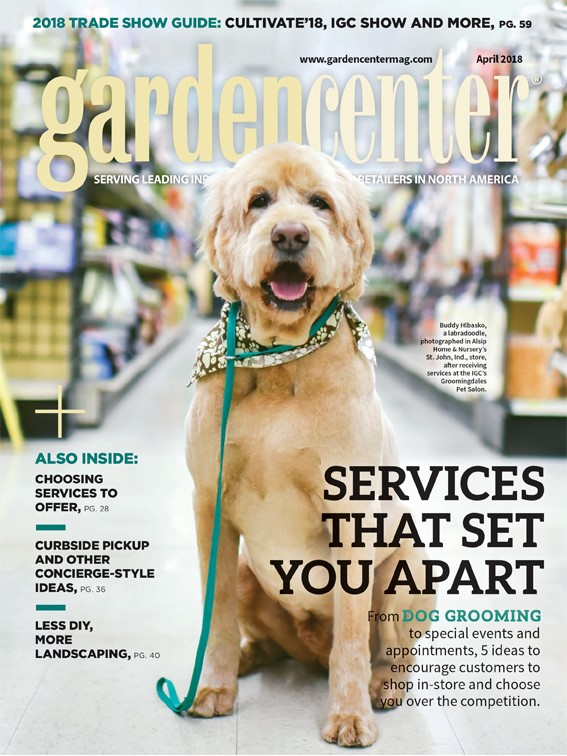
Explore the April 2018 Issue
Check out more from this issue and find you next story to read.
Latest from Garden Center
- Proven Winners introduces more than 100 new varieties for 2025
- Weekend Reading 5/10/24
- The Family Business, Part 2: Agreeing (and disagreeing) on capital investments
- Registration opens for Darwin Perennials Day
- Weekend Reading 5/3/24
- Weekend Reading 4/26/24
- Smith Gardens assumes operations of Skagit Horticulture
- Beneficial insect sachets now included with Monrovia mandevilla
